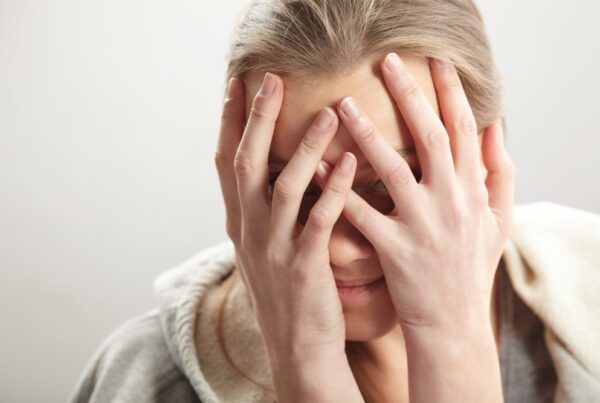Obsessive-compulsive disorder (OCD) is a chronic condition that is classified in the Diagnostic and Statistical Manual of Mental Disorders, Fifth Edition (DSM-5) as an anxiety disorder. OCD is characterized by unreasonable, uncontrollable, or recurring thoughts (obsessions) followed by a behavioral response (compulsions). Obsessions are defined as “repeated thoughts, urges, or mental images that cause anxiety.” Compulsions are defined as “repetitive behaviors that a person with OCD feels the urge to do in response to an obsessive thought.” The International OCD Foundation asserts that OCD equally affects men, women, and children of all races, ethnicities, and backgrounds. According to Anxiety and Depression Association of America approximately 2.3% of the population has OCD, which is about 1 in 40 adults and 1 in 100 children in the U.S. The gold standard treatment for OCD includes a specific component of CBT (cognitive behavioral therapy), known as exposure with response prevention (ERP) or exposure therapy.
Behavioral Therapy: CBT/ ERP
Cognitive behavioral therapy (CBT) is a structured, short-term, goal-oriented form of talk therapy. Positive Psychology explains CBT as a “psycho-social intervention that focuses on changing unhelpful thoughts, beliefs, attitudes and behaviors, improve emotional regulation and create a suite of coping strategies to solve problematic issues.” The CBT model fundamentally believes that the meanings assigned to incidences are what drive the associated upsetting emotions, not the events themselves. During CBT sessions, an individual will have the opportunity to test out their automatic thoughts and see if they are accurate or if they are simply a direct manifestation of an inaccurate, dysfunctional assumption. Through CBT a person can learn to replace these erroneous assumptions and adjust negative self-views by way of behavior modification, which is reinforced through exposure therapy.
Exposure therapy is a highly effective, evidence-based treatment technique that aims to help people break unhealthy behavioral patterns through systematically exposing individuals to their obsessive thoughts and/ or situations that trigger their obsessions, guiding them to replace these dysfunctional patterns with positive thinking patterns, and ultimately preventing the associated compulsive behaviors. The American Psychological Association (APA) indicate that there are several variations of exposure therapy (e.g., in vivo exposure, imaginal exposure, interceptive exposure, etc.). The APA further explains that exposure therapy in CBT can be paced in different ways:
- Graded exposure: The facilitating mental health provider helps the individual construct an exposure fear hierarchy, which entails ranking feared objects, activities, or situations according to difficulty. They begin with mildly or moderately difficult exposures, then progress to more difficult ones.
- Flooding: Using the exposure fear hierarchy to begin exposure with the most difficult tasks.
- Systematic desensitization: Combining exposure with relaxation exercises to make them feel more manageable and to associate the feared objects, activities, or situations with relaxation.
Research has shown the more exposure is disseminated is directly linked to treatment outcome and improved mental health.
Treatment In Calabasas
Calabasas is a city in California. It is a well-known suburb of Los Angeles, located west of the San Fernando Valley and north of the Santa Monica Mountains. Over the past decade, the city of Calabasas has grown in its reputation for luxury as well as for privacy which makes it a hidden gem for residential living for society’s elite, and one of the most desirable destinations in Los Angeles County. It is also home to a plethora of highly qualified mental health clinicians providing an array of therapeutic services and treatment options.
The information above is provided for the use of informational purposes only. The above content is not to be substituted for professional advice, diagnosis, or treatment, as in no way is it intended as an attempt to practice medicine, give specific medical advice, including, without limitation, advice concerning the topic of mental health. As such, please do not use any material provided above to disregard professional advice or delay seeking treatment.




